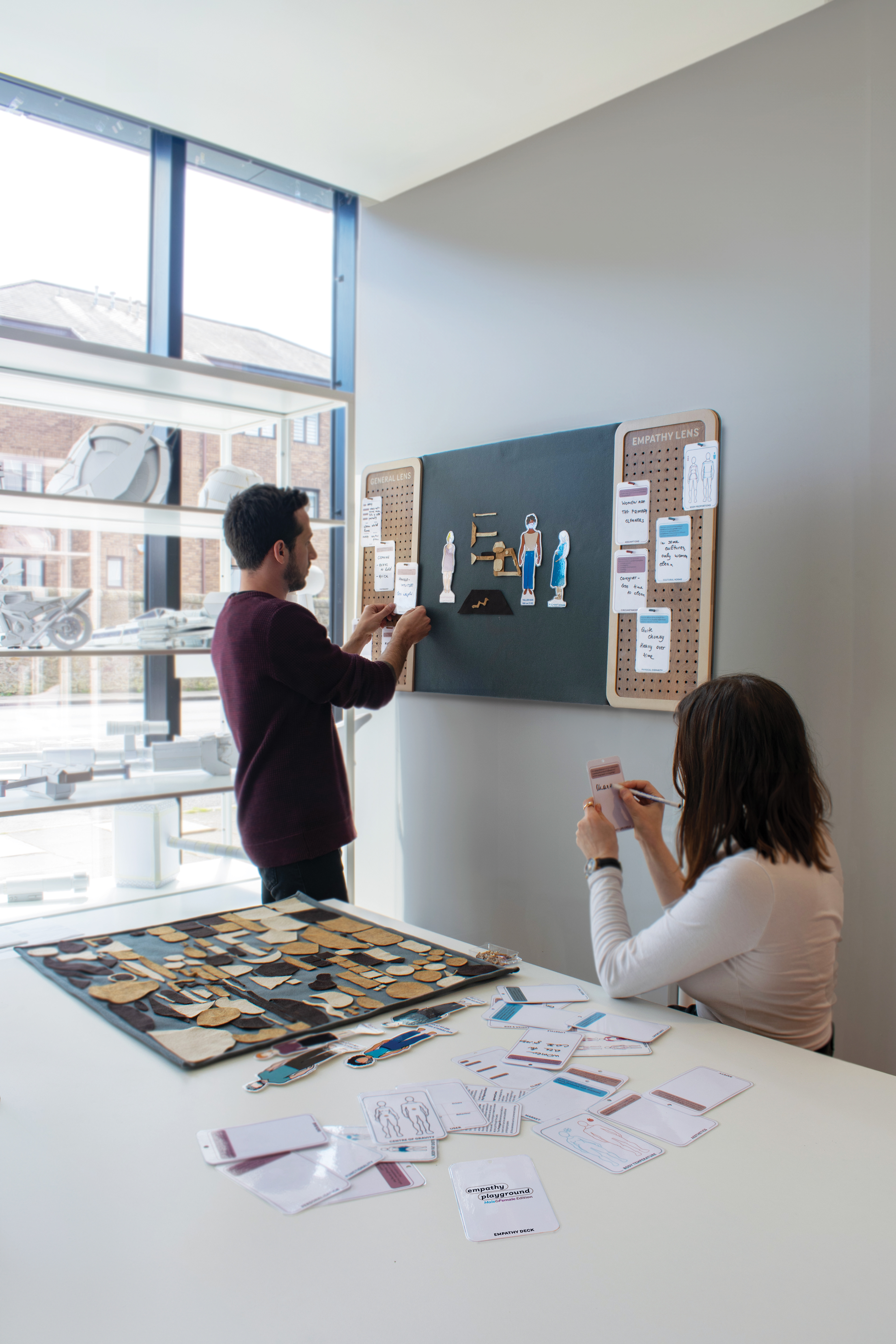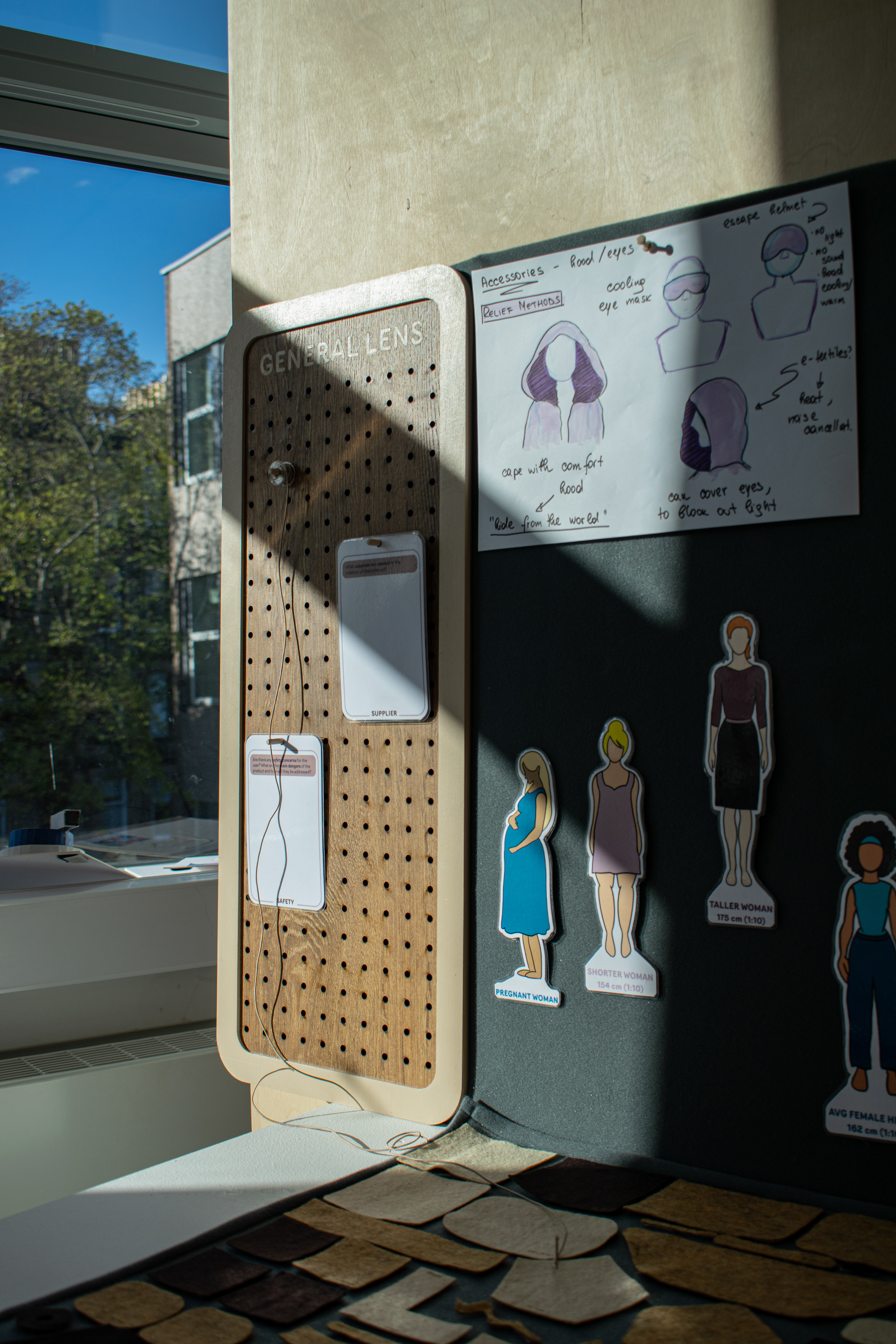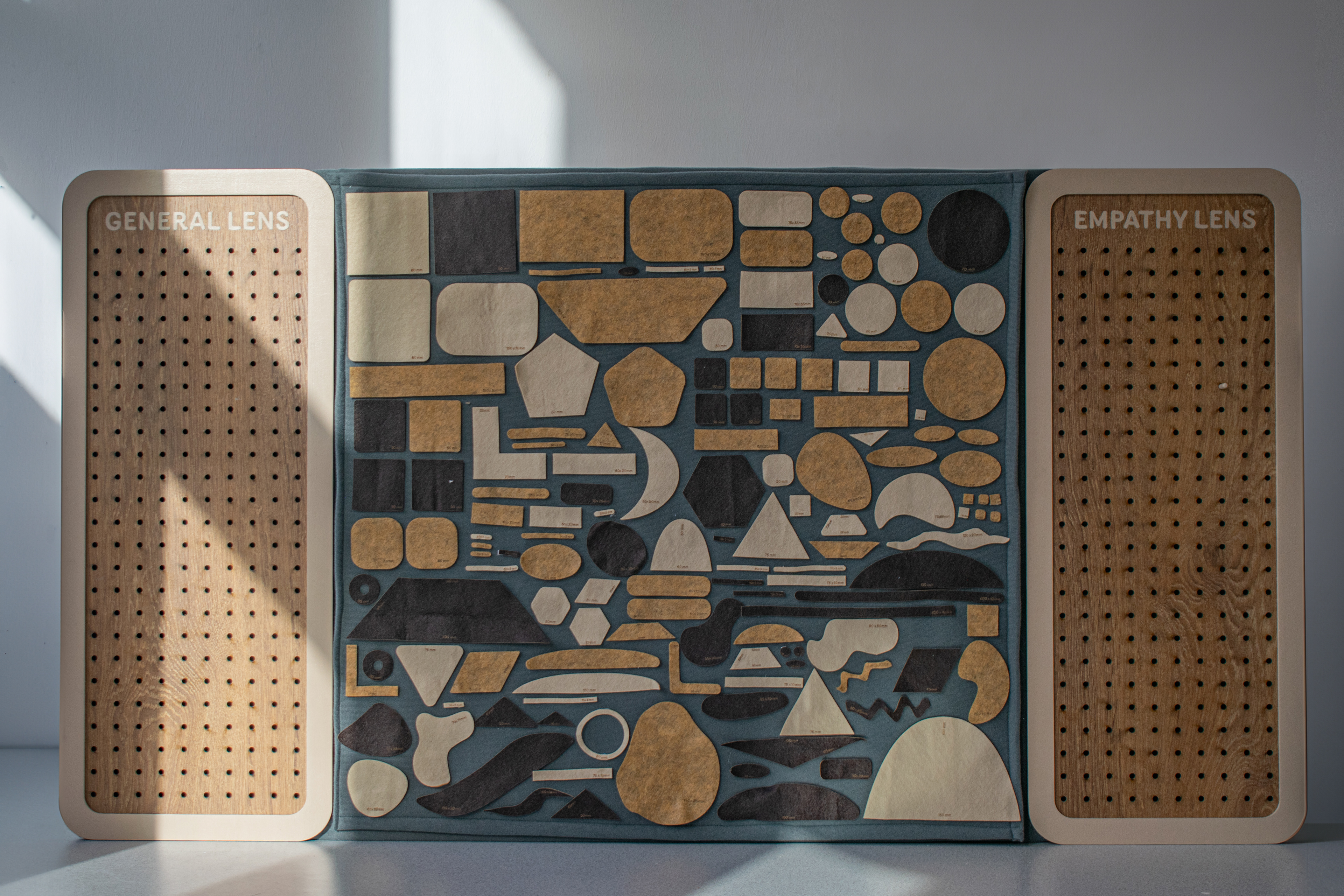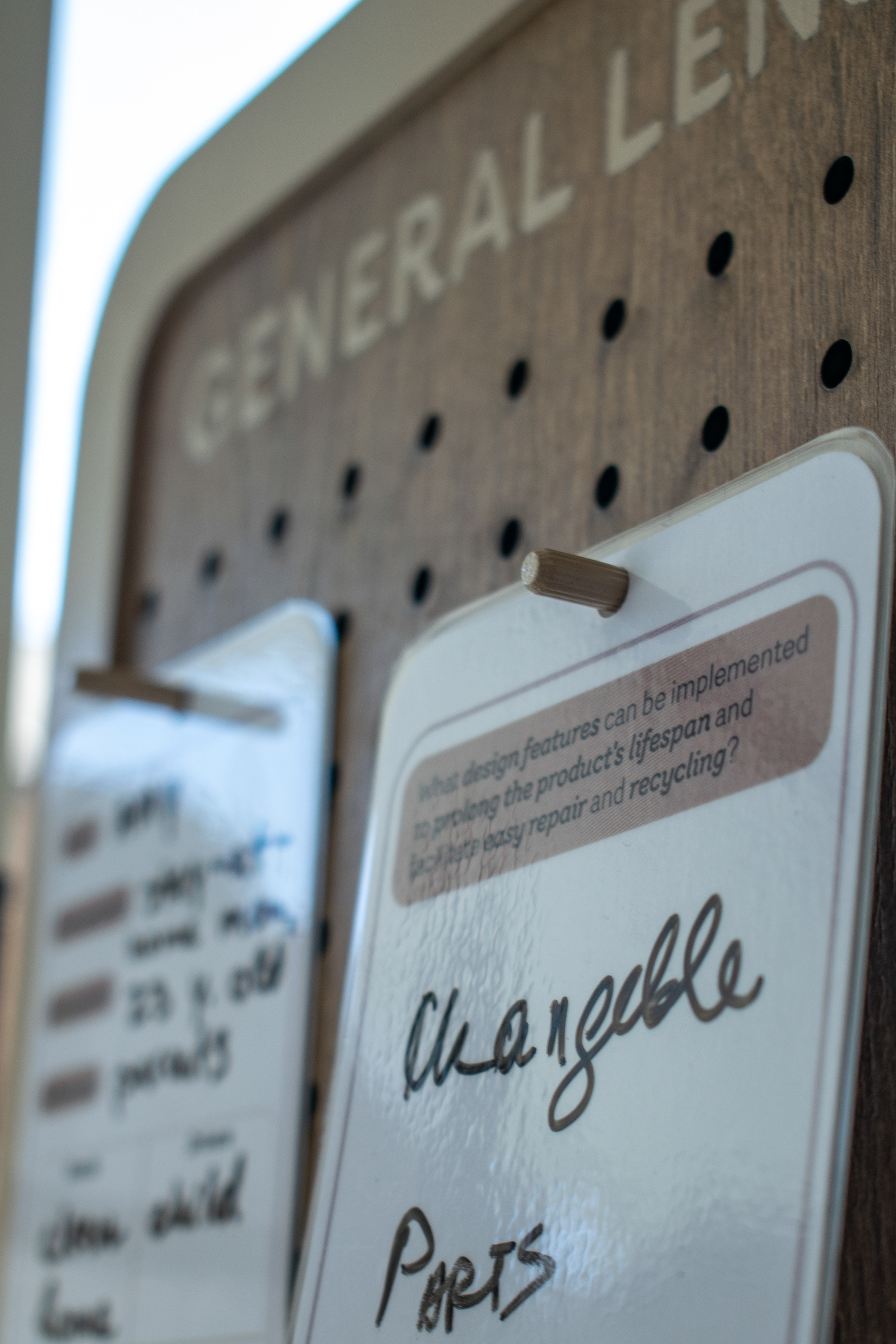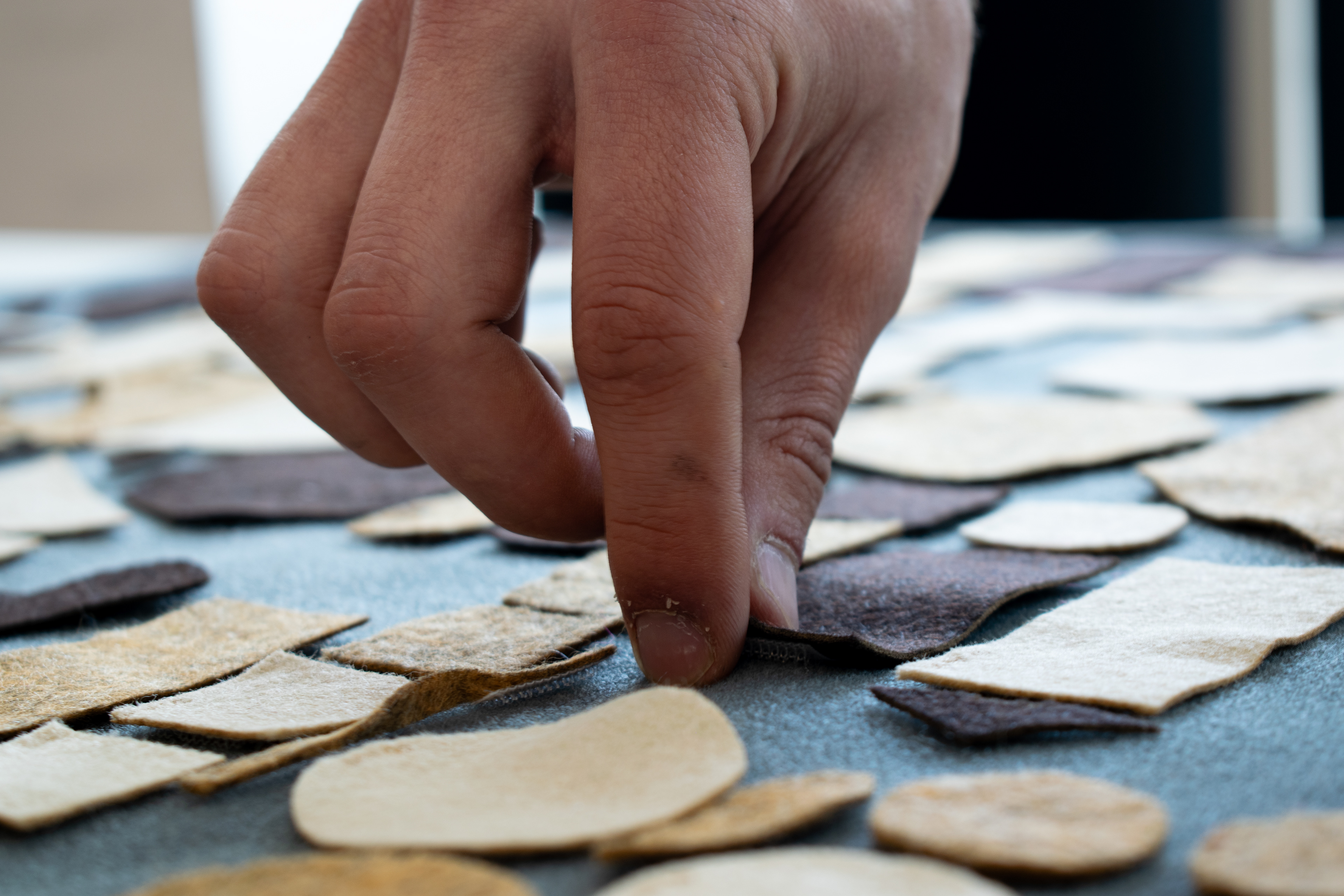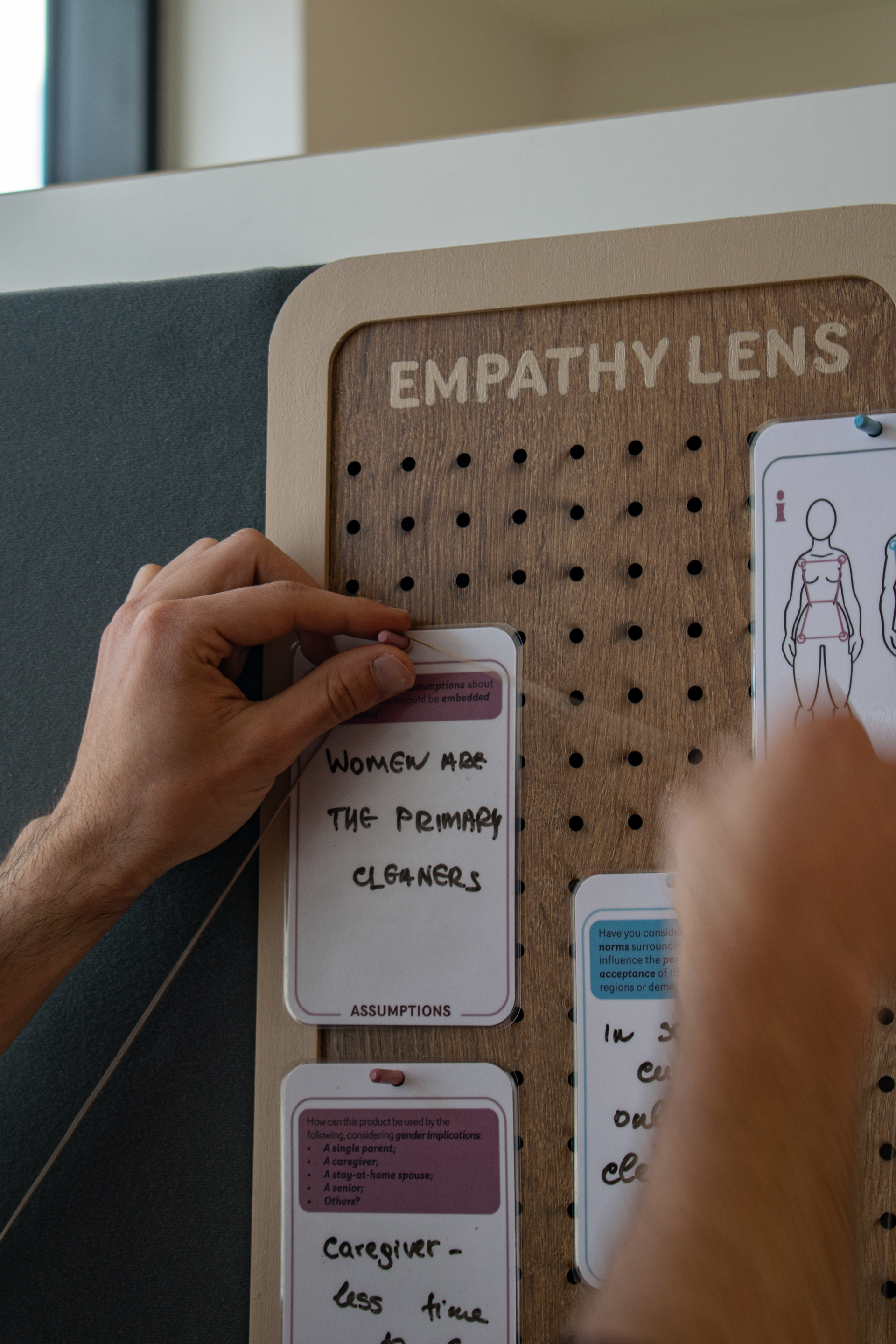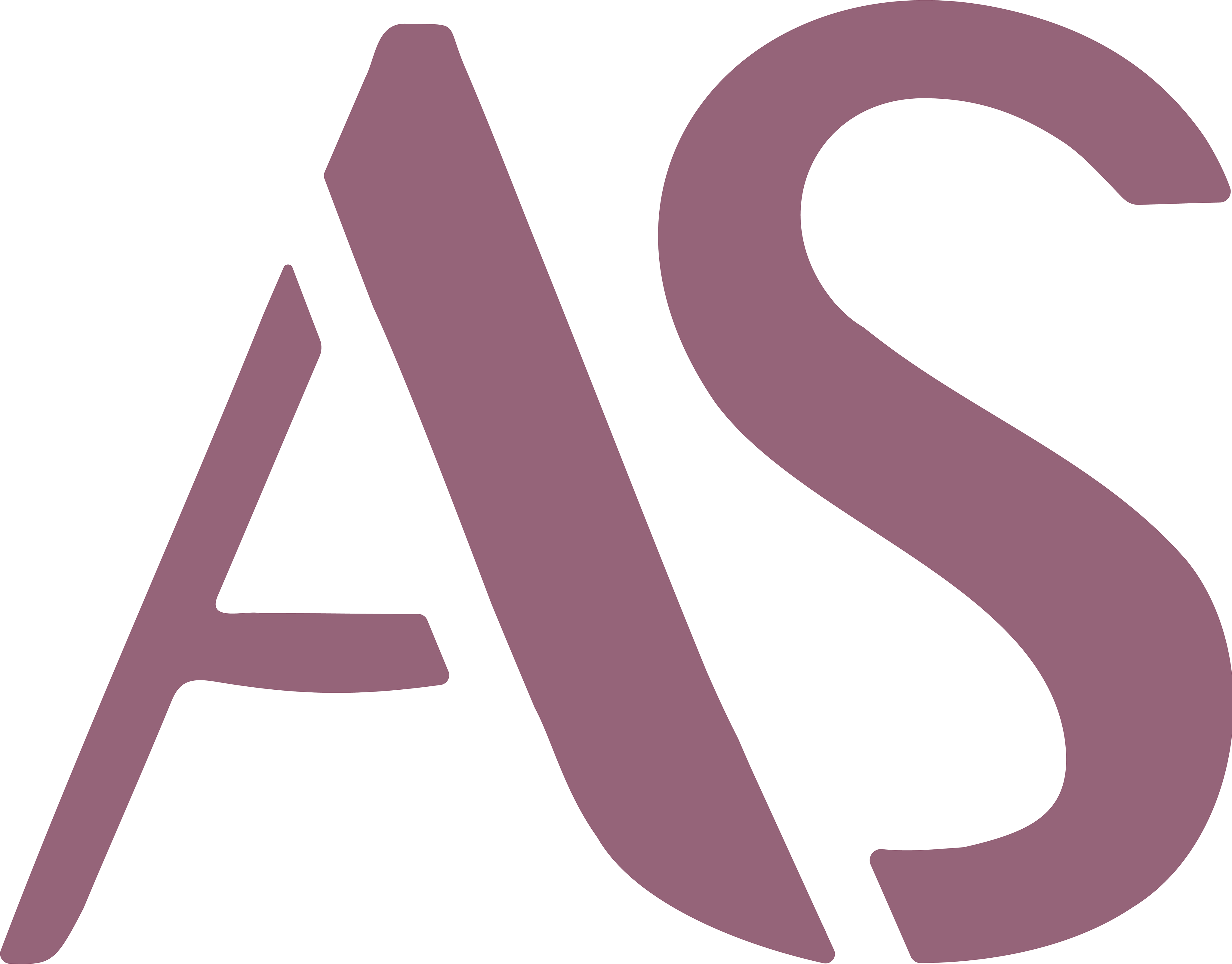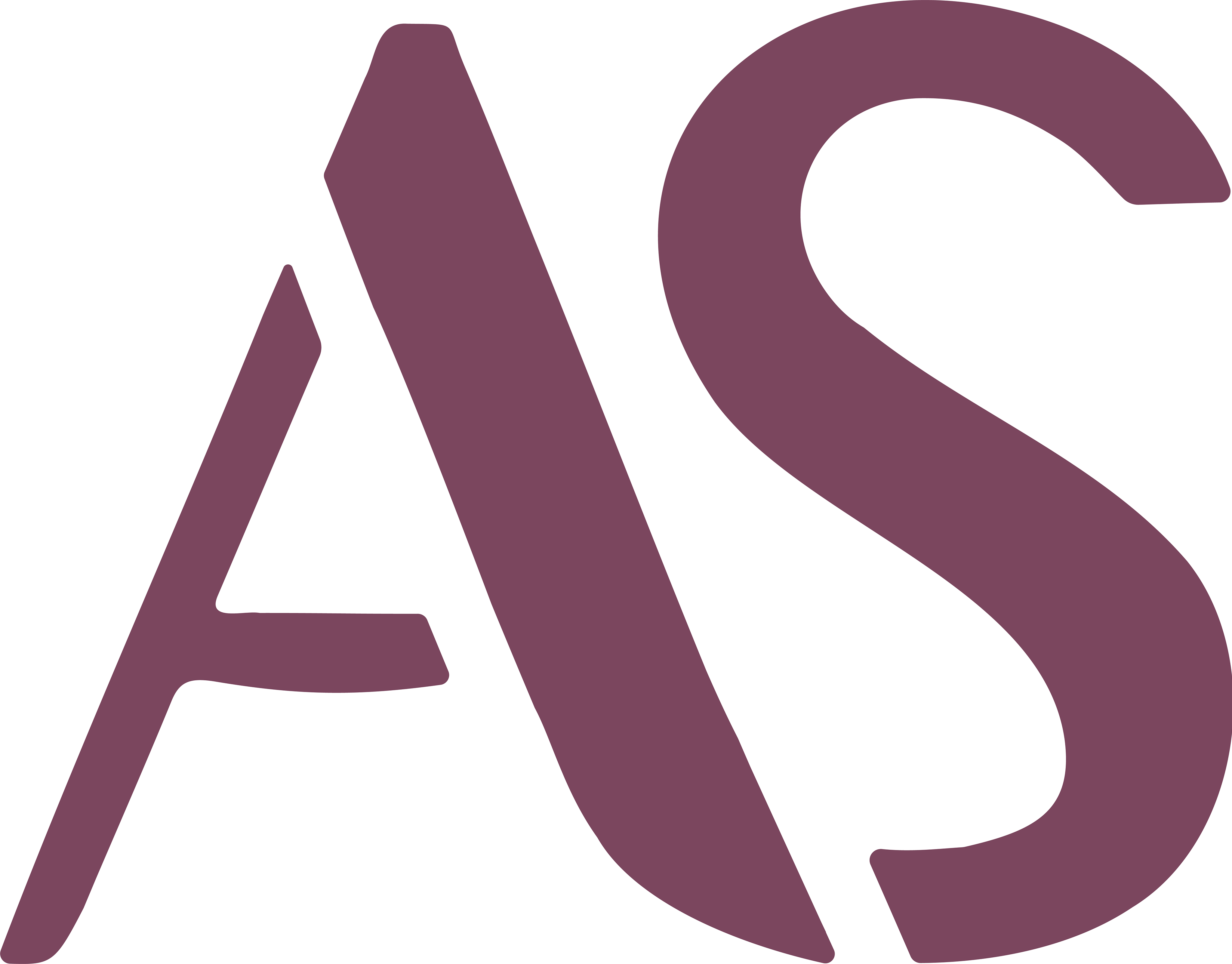My final year project centres around the design process itself, and it acts as a toolkit for designers to create better equitable products. Empathy Playground is a product-based service facilitating equity.
Many everyday objects are biased, and primarily against women: they are 17% more likely to die in a car crash, uniforms are ill-fitting and endanger them, technology often overlooks the size differences etc. Unfortunately, the list goes on. There are also products biased against men, such as the location of baby-changing facilities. This is partly a design problem, as sex-based differences are not taken into account.
Conducting a literature review, highlighted other factors contributing to this sex-based bias in products: lack of data on women's bodies (most research does not sex-segregate so differences in needs are overlooked) and lack of female designers.
A survey was created to further try to understand women's experiences in industrial design in the UK. The data was analysed using an affinity diagram and showed a lack of women in leadership positions in design. Another theme that emerged was empathy, and how it comes easier for women.
To gain a bigger understanding of the survey findings, follow-up interviews were conducted. The interviewees expanded on the topic of female empathy in design, stating that maybe does not depend on sex per se, rather than the different lived experiences of people, thus having a diverse team is key.
Thus, the key factors which influence the bias of products are the lack of female designers, lack of data and unconscious bias. Based on them, different project directions were created, such as a database facilitating equal research, a speculative approach of female-only design, and services meant to diversify the industry.
This project aims to reduce gender bias in design by assisting designers in identifying and addressing their unconscious biases early in the process, thus fostering the creation of more equitable products. While the project intends to address various biases over time, the current focus is on gender
biases, specifically about the biological sexes of men and women.
biases, specifically about the biological sexes of men and women.
The intended users for this project are individual designers, design teams and design agencies.
Initial prototypes included board games, card decks and spinning wheels, all meant to make designers think about their own biases. Market research showed that card decks are one of the most used tools in the design process, with examples like the IDEO cards or 75 Tools for Creative Thinking. They are not time-consuming and integrate easily into the design process, thus this was the chosen concept.
The first version of cards was made out of an interrogative side and a preemptive one, both of which then split further as shown on the chart. The version was tested, and users found it too confusing. One user
mentioned that they would like to have the option of writing on the cards, as a way of note-taking. The main struggle was the visualisation and iteration of the ideas, which prompted the addition of a toolkit.
mentioned that they would like to have the option of writing on the cards, as a way of note-taking. The main struggle was the visualisation and iteration of the ideas, which prompted the addition of a toolkit.
Acting upon the received feedback, a toolkit was created alongside the cards. It had building blocks to allow for prototyping and was based on gamification. A new concern that emerged during testing was the storage of the prototypes themselves. Another key takeaway was the introduction of human figures for scale reference and the human factor.
A new set of cards was developed, based on the PDS and cards with bias-spotting questions. A prototype kit out of felt shapes was favoured, as it allows for easy use and versatility. Scale figures were created as well. The concept was user-tested in a focus group of product design students. The test was a success. The gender cards made the participants question their biases and change the design in favour of both men and women. Some key takeaways from the session, are the need for more fact cards representing the differences between men and women, better card readability and more varied shapes.
The board was developed to act as a display for the cards and prototype kit. It has a removable sheet of material which can be attached below or used to ideate on a table.
Based on the research undertaken, the prototypes developed and the feedback from users, the product can be defined as a system targeting biases in the design process, and in the scope of this project the Male & Female bias in particular. The core of the system is the cards. It has a supporting board, with the prototype kit and human figures as well as accessories.
